
Thumbs up for NT gamba grass weed declaration
The Invasive Species Council has welcomed the declaration of gamba grass as a weed by the Northern Territory government (which follows bans by the Queensland

The Invasive Species Council has welcomed the declaration of gamba grass as a weed by the Northern Territory government (which follows bans by the Queensland
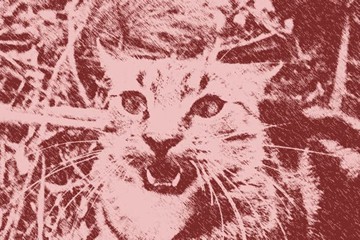
Our Work Invasive species include pest animals like feral cats and foxes, introduced marine pests, weeds, diseases, fungi and parasites, as well as insects from

In this submission, we call on the Hon Kate Worden MLA, Minister for Environment Climate Change and Water Security to declare buffel grass a weed under the NT Weeds Management Act for all land tenure in the Northern Territory.
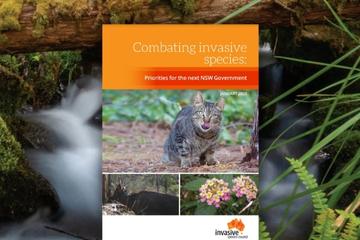
We face a crisis and current measures and resources in NSW are insufficient to halt and mitigate the impact of established invasive species and prevent the arrival and spread of new invasive species. In this document we detail priority actions the next NSW government can take that will strengthen the NSW biosecurity system and address priority environmental threats from invasive species.
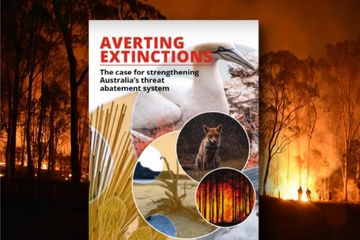
Australia was once a country where you could walk out at night and it was alive with wildlife scurrying and scrapping, digging and dashing. Australia’s nights are too quiet now.
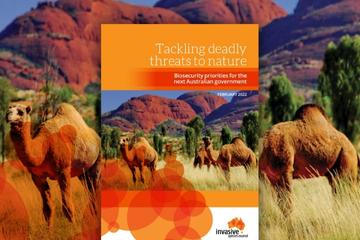
Initiatives and policies to improve Australia’s capacity to keep nature safe from new and established invasive species.
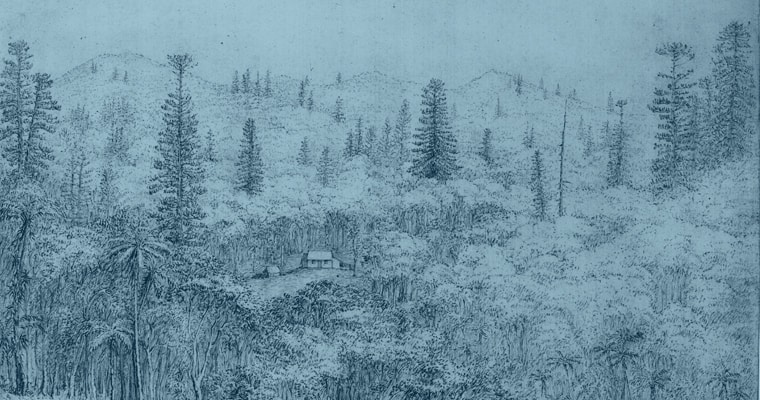
A series of fact sheets on the 14 distinct native plant communities on Norfolk Island.

For the first time ever the native vegetation of Norfolk Island has been mapped, both as it exists now and before European arrival in 1750.

This case study explains Australia tamed a devastating and seemingly intractable weed with the aid of a tiny moth from South America.

This report by Tim Low explores the health and environmental implications of using glyphosate in Australia on crops and to stop weeds invading native ecosystems.

Escaped garden weeds like lantana and blackberries are choking our streams and bushland and costing Australia billions.

Submitted: April 2016
The Queensland Weed and Pest Animal Strategy can be significantly strengthened to maximise the effectiveness of invasive species control and management under the new Act.

Seven national priorities for invasive species reform that deliver long-term cost savings, stem biodiversity losses and enhance agricultural productivity.
The Invasive Species Council endorses most of the objectives and actions outlined in this comprehensive draft plan. The plan is mostly clear and succinct.
The proposed new direction is unclear, despite the value of underpinning concepts of coordination and collaboration. The paper either signifies an exciting new era or government retreat from all but a few popular causes.

The Invasive Species Council has welcomed the declaration of gamba grass as a weed by the Northern Territory government (which follows bans by the Queensland

Our Work Invasive species include pest animals like feral cats and foxes, introduced marine pests, weeds, diseases, fungi and parasites, as well as insects from

In this submission, we call on the Hon Kate Worden MLA, Minister for Environment Climate Change and Water Security to declare buffel grass a weed under the NT Weeds Management Act for all land tenure in the Northern Territory.

We face a crisis and current measures and resources in NSW are insufficient to halt and mitigate the impact of established invasive species and prevent the arrival and spread of new invasive species. In this document we detail priority actions the next NSW government can take that will strengthen the NSW biosecurity system and address priority environmental threats from invasive species.

Australia was once a country where you could walk out at night and it was alive with wildlife scurrying and scrapping, digging and dashing. Australia’s nights are too quiet now.

Initiatives and policies to improve Australia’s capacity to keep nature safe from new and established invasive species.

A series of fact sheets on the 14 distinct native plant communities on Norfolk Island.

For the first time ever the native vegetation of Norfolk Island has been mapped, both as it exists now and before European arrival in 1750.

This case study explains Australia tamed a devastating and seemingly intractable weed with the aid of a tiny moth from South America.

This report by Tim Low explores the health and environmental implications of using glyphosate in Australia on crops and to stop weeds invading native ecosystems.

Escaped garden weeds like lantana and blackberries are choking our streams and bushland and costing Australia billions.

Submitted: April 2016
The Queensland Weed and Pest Animal Strategy can be significantly strengthened to maximise the effectiveness of invasive species control and management under the new Act.

Seven national priorities for invasive species reform that deliver long-term cost savings, stem biodiversity losses and enhance agricultural productivity.
The Invasive Species Council endorses most of the objectives and actions outlined in this comprehensive draft plan. The plan is mostly clear and succinct.
The proposed new direction is unclear, despite the value of underpinning concepts of coordination and collaboration. The paper either signifies an exciting new era or government retreat from all but a few popular causes.

The Invasive Species Council has welcomed the declaration of gamba grass as a weed by the Northern Territory government (which follows bans by the Queensland

Our Work Invasive species include pest animals like feral cats and foxes, introduced marine pests, weeds, diseases, fungi and parasites, as well as insects from

In this submission, we call on the Hon Kate Worden MLA, Minister for Environment Climate Change and Water Security to declare buffel grass a weed under the NT Weeds Management Act for all land tenure in the Northern Territory.

We face a crisis and current measures and resources in NSW are insufficient to halt and mitigate the impact of established invasive species and prevent the arrival and spread of new invasive species. In this document we detail priority actions the next NSW government can take that will strengthen the NSW biosecurity system and address priority environmental threats from invasive species.

Australia was once a country where you could walk out at night and it was alive with wildlife scurrying and scrapping, digging and dashing. Australia’s nights are too quiet now.

Initiatives and policies to improve Australia’s capacity to keep nature safe from new and established invasive species.

A series of fact sheets on the 14 distinct native plant communities on Norfolk Island.

For the first time ever the native vegetation of Norfolk Island has been mapped, both as it exists now and before European arrival in 1750.

This case study explains Australia tamed a devastating and seemingly intractable weed with the aid of a tiny moth from South America.

This report by Tim Low explores the health and environmental implications of using glyphosate in Australia on crops and to stop weeds invading native ecosystems.

Escaped garden weeds like lantana and blackberries are choking our streams and bushland and costing Australia billions.

Submitted: April 2016
The Queensland Weed and Pest Animal Strategy can be significantly strengthened to maximise the effectiveness of invasive species control and management under the new Act.

Seven national priorities for invasive species reform that deliver long-term cost savings, stem biodiversity losses and enhance agricultural productivity.
The Invasive Species Council endorses most of the objectives and actions outlined in this comprehensive draft plan. The plan is mostly clear and succinct.
The proposed new direction is unclear, despite the value of underpinning concepts of coordination and collaboration. The paper either signifies an exciting new era or government retreat from all but a few popular causes.
Get our blog the Feral Herald delivered to your inbox.

The Invasive Species Council was formed in 2002 to seek stronger laws, policies and programs to protect nature from harmful pests, weeds and diseases.
The Invasive Species Council acknowledges the Traditional Custodians throughout Australia and their connections to land and sea. We pay our respect to their Elders past and present and extend that respect to all Aboriginal and Torres Strait Islander peoples today.
Our protected areas are being trashed, trampled, choked and polluted by an onslaught of invaders. Invasive species are already the overwhelming driver of our animal extinction rate, and are expected to cause 75 of the next 100 extinctions.
But you can help to turn this around and create a wildlife revival in Australia.
From numbats to night parrots, a tax-deductible donation today can help defend our wildlife against the threat of invasive weeds, predators, and diseases.
As the only national advocacy environment group dedicated to stopping this mega threat, your gift will make a big difference.
A silent crisis is unfolding across Australia. Every year, billions of native animals are hunted and killed by cats and foxes. Fire ants continue to spread and threaten human health. And the deadly strain of bird flu looms on the horizon. Your donation today will be used to put the invasive species threat in the media, make invasive species a government priority, ensure governments take rapid action to protect nature and our remarkable native wildlife from invasives-led extinction, death and destruction.
If you are having trouble submitting a form, please read this guide.
Please fill out the following form and one of our team will be in contact to assist as soon as possible. Please make sure to include any helpful information, such as the device you were using (computer, tablet or mobile phone) and if known, your browser (Mozilla Firefox, Chrome, Safari etc)
"*" indicates required fields
Dear Project Team,
[YOUR PERSONALISED MESSAGE WILL APPEAR HERE.]
I support the amendment to the Kosciuszko National Park Wild Horse Heritage Management Plan to allow our incredible National Parks staff to use aerial shooting as one method to rapidly reduce feral horse numbers. I want to see feral horse numbers urgently reduced in order to save the national park and our native wildlife that live there.
The current approach is not solving the problem. Feral horse numbers have rapidly increased in Kosciuszko National Park to around 18,000, a 30% jump in just the past 2 years. With the population so high, thousands of feral horses need to be removed annually to reduce numbers and stop our National Park becoming a horse paddock. Aerial shooting, undertaken humanely and safely by professionals using standard protocols, is the only way this can happen.
The government’s own management plan for feral horses states that ‘if undertaken in accordance with best practice, aerial shooting can have the lowest negative animal welfare impacts of all lethal control methods’.
This humane and effective practice is already used across Australia to manage hundreds of thousands of feral animals like horses, deer, pigs, and goats.
Trapping and rehoming of feral horses has been used in Kosciuszko National Park for well over a decade but has consistently failed to reduce the population, has delayed meaningful action and is expensive. There are too many feral horses in the Alps and not enough demand for rehoming for it to be relied upon for the reduction of the population.
Fertility control as a management tool is only effective for a small, geographically isolated, and accessible population of feral horses where the management outcome sought is to maintain the population at its current size. It is not a viable option to reduce the large and growing feral horse population in the vast and rugged terrain of Kosciuszko National Park.
Feral horses are trashing and trampling our sensitive alpine ecosystems and streams, causing the decline and extinction of native animals. The federal government’s Threatened Species Scientific Committee has stated that feral horses ‘may be the crucial factor that causes final extinction’ for 12 alpine species.
I recognise the sad reality that urgent and humane measures are necessary to urgently remove the horses or they will destroy the Snowies and the native wildlife that call the mountains home. I support a healthy national park where native species like the Corroboree Frog and Mountain Pygmy Possum can thrive.
Dear Project Team,
[YOUR PERSONALISED MESSAGE WILL APPEAR HERE.]
I support the amendment to the Kosciuszko National Park Wild Horse Heritage Management Plan to allow our incredible National Parks staff to use aerial shooting as one method to rapidly reduce feral horse numbers. I want to see feral horse numbers urgently reduced in order to save the national park and our native wildlife that live there.
The current approach is not solving the problem. Feral horse numbers have rapidly increased in Kosciuszko National Park to around 18,000, a 30% jump in just the past 2 years. With the population so high, thousands of feral horses need to be removed annually to reduce numbers and stop our National Park becoming a horse paddock. Aerial shooting, undertaken humanely and safely by professionals using standard protocols, is the only way this can happen.
The government’s own management plan for feral horses states that ‘if undertaken in accordance with best practice, aerial shooting can have the lowest negative animal welfare impacts of all lethal control methods’.
This humane and effective practice is already used across Australia to manage hundreds of thousands of feral animals like horses, deer, pigs, and goats.
Trapping and rehoming of feral horses has been used in Kosciuszko National Park for well over a decade but has consistently failed to reduce the population, has delayed meaningful action and is expensive. There are too many feral horses in the Alps and not enough demand for rehoming for it to be relied upon for the reduction of the population.
Fertility control as a management tool is only effective for a small, geographically isolated, and accessible population of feral horses where the management outcome sought is to maintain the population at its current size. It is not a viable option to reduce the large and growing feral horse population in the vast and rugged terrain of Kosciuszko National Park.
Feral horses are trashing and trampling our sensitive alpine ecosystems and streams, causing the decline and extinction of native animals. The federal government’s Threatened Species Scientific Committee has stated that feral horses ‘may be the crucial factor that causes final extinction’ for 12 alpine species.
I recognise the sad reality that urgent and humane measures are necessary to urgently remove the horses or they will destroy the Snowies and the native wildlife that call the mountains home. I support a healthy national park where native species like the Corroboree Frog and Mountain Pygmy Possum can thrive.